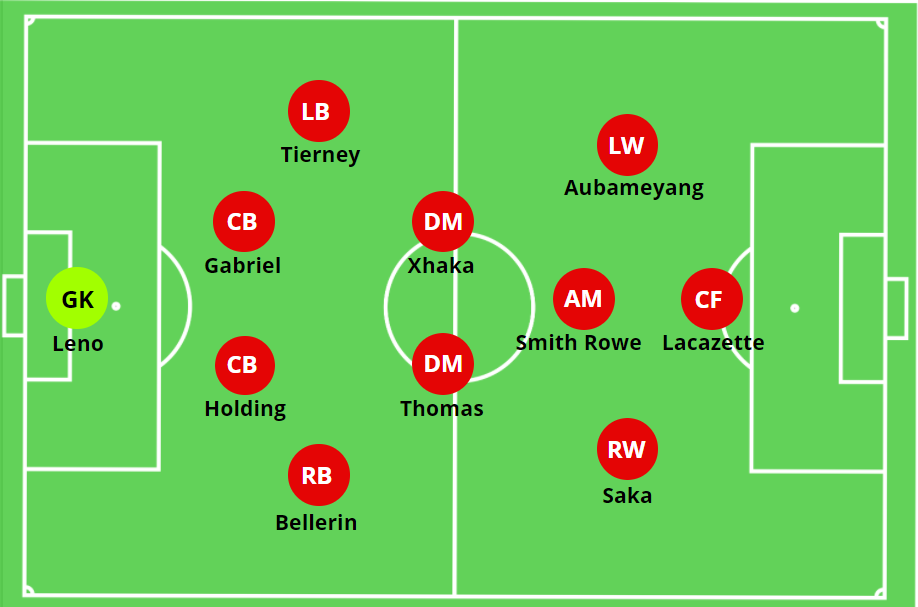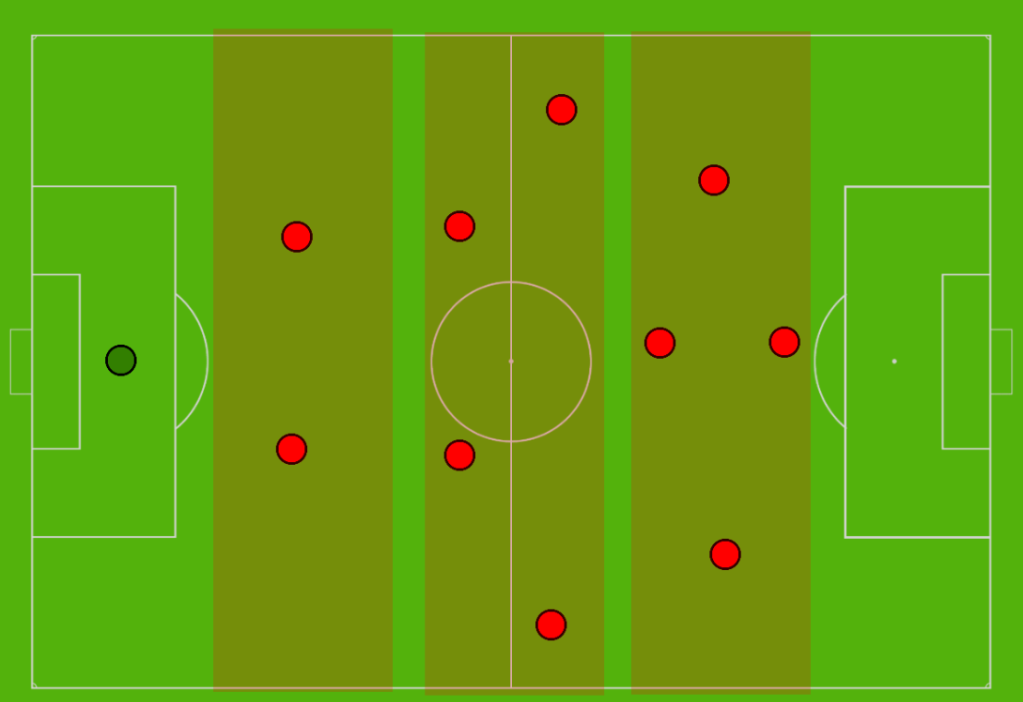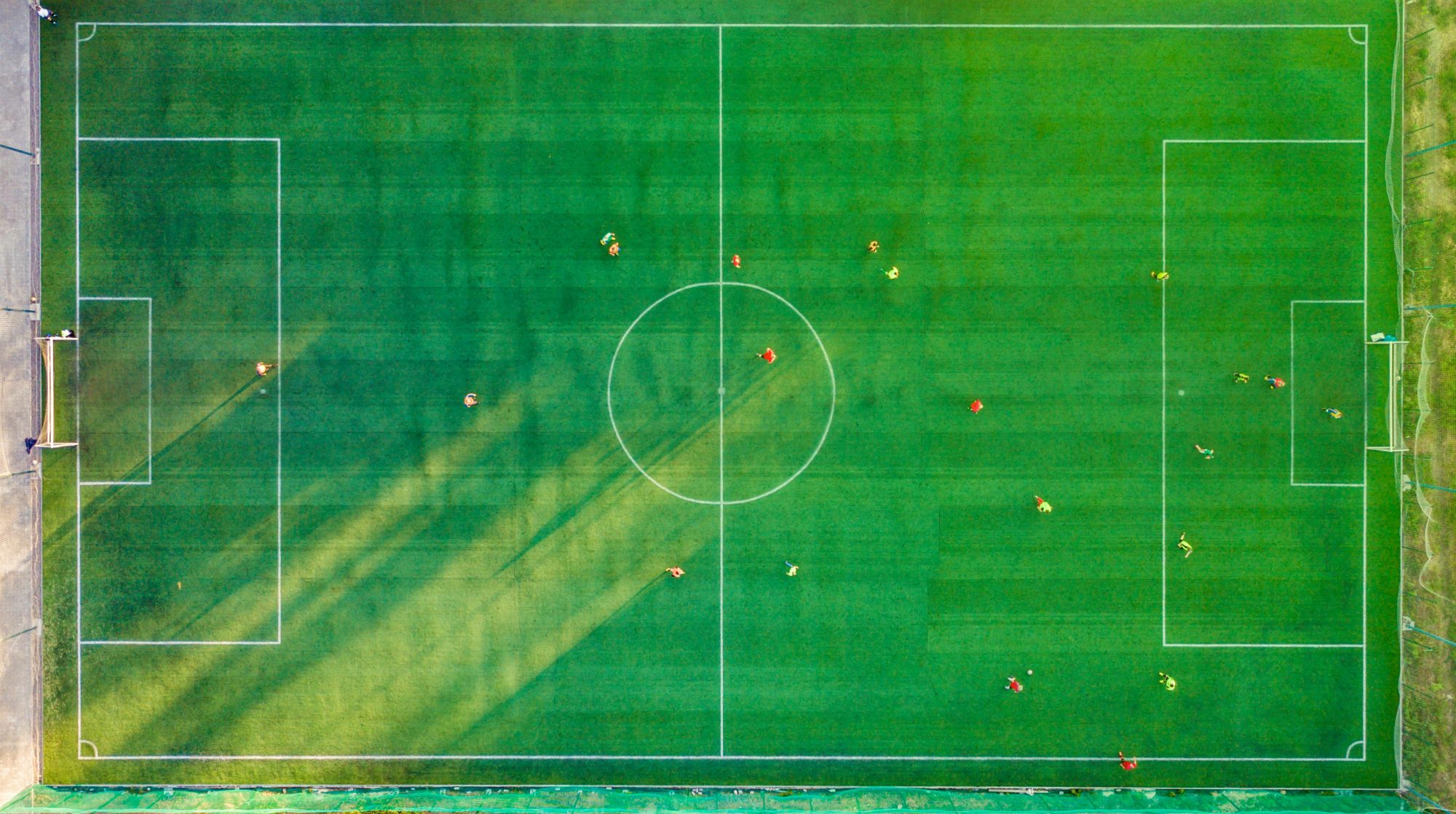It was only last month when some people were considering Arsenal as relegation contenders, and Mikel Arteta look destined for the sack. But with a change in formation and a couple of key additions to the side, Mikel Arteta’s Arsenal are suddenly back in the top ten, after a five match unbeaten run in the league. So what’s changed? Well, after our tactical analysis earlier this season on the Gunners’ 3-4-3 formation and struggles scoring goals, we now take a look at how Arsenal have found their form in the 4-2-3-1. This is our latest Arsenal Tactical Analysis.
system of play: 4-2-3-1

Arsenal’s change of shape has almost unquestionably aided in their recent success. The 4-2-3-1 has allowed for more creativity and productivity up front, while also re-establishing their stability at the other end of the pitch.
Bernd Leno has retained his place in goal and quite impressively, has kept five clean sheets in his last six matches. Cedric Soares battles Hector Bellerin for a place at right-back, and may continue to push for a place given the Frenchman’s form even during their recent resurgence. Rob Holding’s suddenly looked like Arsenal’s most consistent defender, and has been paired recently with a mix of David Luiz, Pablo Mari and Gabriel Magalhaes. Gabriel is probably the answer long-term to Arsenal’s back-line, but Arteta can be proud of the former Bolton man’s form so far in 2021. On the left, Kieran Tierney has been one of Arsenal’s best players in recent weeks, given more freedom to gallop forward in the change of system. Ahead of the back-four and crucial to their defensive stability, Granit Xhaka and Thomas Partey have returned in a double-pivot. Mohamed Elneny and Dani Ceballos remain solid options from the bench, but Arteta will be hoping Thomas Partey remains fit for the rest of the season.
Most encouragingly of all, Emile Smith Rowe has come out of nowhere to be Arsenal’s best player all of a sudden, alongside Bukayo Saka, who’s been the Gunners’ best player this season as a whole. Pierre-Emerick Aubameyang looks to be finding his feet again as Arsenal have recovered form, but will now have to compete for a place on the left with Gabriel Martinelli. Alexandre Lacazette’s also recovered a bit of goal-scoring form recently, with five goals over the festive period.
Willian and Ainsley-Maitland Niles remain decent options for Arsenal from the bench, but just about everyone else looks to be on their way out of the club. Nonetheless, it’s suddenly a good side again, with fantastic balance all around the field. So speaking to that balance, let’s discuss their attacking and defending shape in this 4-2-3-1, that has allowed for the Gunners to have more success in both regards.
attacking shape

Arsenal’s attacking shape during the build-up has resembled something of a 4-2-4, although they have attacked more quickly than the painfully slow build-up from earlier in the season. Kieran Tierney is the one man who doesn’t really fit into this 4-2-4 shape, given that in possession and attacking phases he is more likely to be found on the left wing than anyone else, as Granit Xhaka drops into his position to help Arsenal bypass their opposition’s block or press. Out of possession, Granit Xhaka recovers his midfield position and stays relatively central. We will discuss this more in a later section, but it is important to note in terms of Arsenal’s “attacking” shape that these initial starting blocks are in place.
The attacking shape could probably be thought of as more 2-4-4 than 4-2-4. Kieran Tierney and whoever’s been at right back have done a great job at maintaining width in wide areas, while both Saka and Aubameyang have frequently cut inside with the ball, or drifted into central areas off the ball. Smith Rowe and Saka look like they’ve played together for Arsenal’s youth teams for years (maybe they have!), and combine so often down the right hand side. With an overlapping fullback and central midfielder adding chaos to this, Arsenal can create overloads down the right-hand-side in particular, while knowing someone like Thomas Partey is there to clean up the mess should they lose possession. They may do the exact same thing on the left, with Smith Rowe, Aubameyang and Tierney combining as part of an attacking trio to get out of trouble in wide areas.
Embed from Getty ImagesKieran Tierney’s also proved to be a dynamic, overlapping fullback on the left, constantly looking to advance past Xhaka, as Aubameyang either drifts inside, or combines in 2v1 situations. The reason why the 2-4-4 makes sense as an attacking shape is the defensive stability it offers in central areas to recover possession and make up for errors. Even if Arsenal become exposed in the wide areas, it becomes easy for a defensive midfielder to shuffle across and Arsenal to retain some degree of balance as others regain their position. This responsibility of covering out of possession is also more clearly defined than in a 3-4-3, where a diffusion of responsibility might occur between the outside centre-back and the defensive midfielder. The 4-2-3-1 also offers greater creativity and fluidity for Arsenal in attack, with an attacking midfielder able to link between the two defensive midfielders and the front three surrounding him. Emile Smith Rowe has done this to a magnificent effect so far, with 3 assists in 5 matches.
defensive improvements
Embed from Getty ImagesArsenal look much more assured in their 4-2-3-1 formation, with more clearly defined roles and responsibilities in defensive phases. Granit Xhaka’s achieved a greater amount of discipline since Christmas, aiding Arsenal’s quest to be more defensively sound. In Holding and someone like Pablo Mari, Arsenal have the ability to deploy no-nonsense defenders who will clear the ball out of danger, without limiting the team’s ability to play out from the back and excite in possession. Against sides where they expect lots of the ball, it makes sense to deploy someone like Gabriel or David Luiz for an extra chance at picking out longer, looping passes that can set the team free.
They’ve improved massively in transition during defensive and attacking phases, and the 4-2-3-1 shape has been a big help in achieving that. Again, Arsenal’s structure of a square shaped back-four with two centre-backs and two defensive midfielders, can force the opposition away from verticality during transitions. Verticality is essential to quick attacking transitions, and so by forcing their opposition out wide they allow themselves more time to regain control, including Smith Rowe recovering a central position or the fullbacks filling in necessary gaps in either wide or central areas.
Arsenal’s press has also improved, and they are now winning the ball back at a higher rate than they were before. During their press, both central midfielders may push up with the play, or one may do so as the other remains withdrawn. Should the press be bypassed with a longer pass, the position of the withdrawn holding midfielder is crucial to help Arsenal recover play and cover in front of the centre-backs. With the 4-2-3-1, Arsenal also have a more natural diamond shape to use in their press than they were able to achieve in the 3-4-3. Their ability to cut off passes in central areas and funnel their opposition out wide has been key to their ability to win the ball back quickly and go on the attack right away.
build-up & positional rotation
Embed from Getty ImagesArsenal’s build-up play remains one of the most intriguing things about Mikel Arteta’s tactics. Their build-up was a big topic of discussion in our tactical analysis earlier in the season regarding their 3-4-3, and despite changing system some things have stayed relatively similar. One of the keys to their methodology involves Granit Xhaka dropping to the left side to pick up the ball, opening up more central passing lanes for Smith Rowe and Thomas Partey. Many teams (such as AC Milan) utilize the approach of a central midfielder dropping into the back-line, but Arsenal typically do this in what is more of a back-four structure, with only one fullback pushing up, which is usually Kieran Tierney.

Other teams might typically do this instead with a back-three structure, but having Cedric or Bellerin remain withdrawn during initial build-up phases offers the Gunners a few advantages. Firstly, they can switch play quickly without the right fullback advancing into the territory of the opposition in a low to mid block. Secondly, it allows Arteta’s men greater recoverability should they fail to succeed in their build-up. Regardless, everything tends to go through the two central midfielders and two centre-backs in the build-up, with Xhaka’s positional rotation causing extra chaos for the opposition. For example, teams playing with a front two such as Newcastle or Crystal Palace may opt to use their strikers to screen passes into Xhaka and Partey. But Xhaka’s movement out wide opens up potential corridors for Partey/Elneny to get free from their markers, alongside someone like Smith Rowe to drop in and pick up the ball. This becomes a greater issue for these types of sides when Arsenal deploy a player like David Luiz, Gabriel or even Rob Holding, who can pick out longer passes from deep and open up the game when they are not under pressure. Therefore opposition sides attempting to stop Arsenal from playing out from the back have two mammoth tasks. Firstly, opposition teams need to stop Arsenal’s centre-backs from having space and time to see options ahead of them. Secondly, they simultaneously need to stop the central midfielders from picking up the ball, which is complicated by Xhaka’s movement out wide and the likelihood that he’ll drag a player with him.
Further forward, Smith Rowe is also an intelligent footballer who may drift wide at random moments to pick up possession. The winger on that side then has the ability to drift in-field, or combine as part of a wider trio of players with the fullback and Smith Rowe, creating a massive overload for the opposition to contest. Finally, Alexandre Lacazette is far from a natural number 9 or a target man, and will often look to pick up possession closer to the half-way line. This allows Arsenal to have another number in central areas to combine or switch play. Suddenly, the 4-2-3-1 is looking like a dream formation for the Gunners.
concluding thoughts
Embed from Getty ImagesIt was only last month when some people were considering Arsenal as relegation contenders, and Mikel Arteta look destined for the sack. But with a change in formation and a couple of key additions to the side, Mikel Arteta’s Arsenal are suddenly back in the top ten, after a five match unbeaten run in the league. The change of system to a 4-2-3-1, moving away from the 3-4-3 in the process, has helped Arsenal achieve greater fluidity and creativity in attack. It’s also allowed for more defensive stability and a more successful high press, due to the extra man in attack and the seamless shapes that can be rotated and used in transition.
So there it is! A tactical analysis of how Arsenal have improved in the 4-2-3-1 shape, with the additions of players like Emile Smith Rowe and Thomas Partey. Be sure to check out more Tactical Analyses and follow on Twitter @mastermindsite, to never miss an update. Thanks for reading and see you soon!
You might also enjoy…
-> Mikel Arteta – 3-4-3 – Arsenal – Tactical Analysis
-> Ole Gunnar Solskjaer – Manchester United – Tactical Analysis
-> Jose Mourinho – Tottenham Hotspur – Tactical Analysis


how did I miss this great piece?
Thank you again!
LikeLike
No problem Amin! Hope you enjoyed it 🙂
LikeLike
Of course I do enjoyed it!
I am excited about each and every post you do in this magnificent site.
P.S 1: Thank you for that guide for how to watch football! a real gem!
P.S 2: really enjoyed your recent article about Thomas Tuchel!
as an Arsenal fan I hope it doesn’t work 😀
LikeLike
Thank you Amin 😀 . Glad you enjoyed both articles and maybe we should hope for your sake they don’t bring Tuchel in! As always if there’s anything you’d like to see feel free to let me know.
LikeLike
Thank you, Rhys! This is a fabulous piece. As an American who’s new to the sport this helps me understand the game and my team on a deeper level. I see the games a little differently after reading. Great job!
LikeLike
Thank you very much Harold! Happy to hear your thoughts. If there’s ever anything you want to see from us always feel free to let us know.
LikeLike